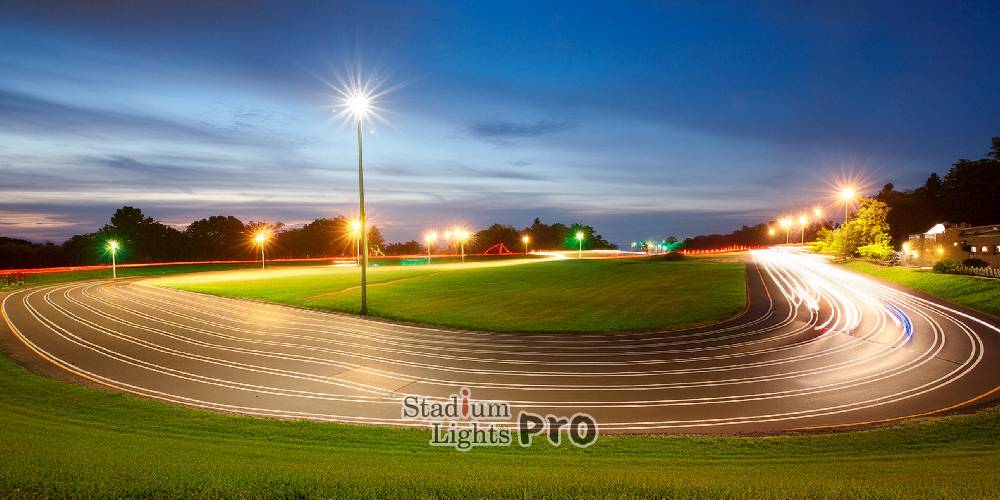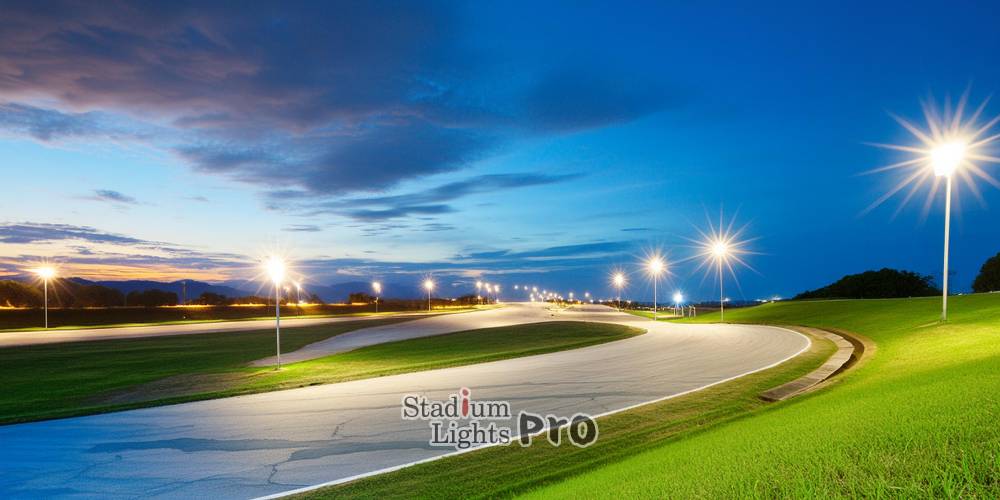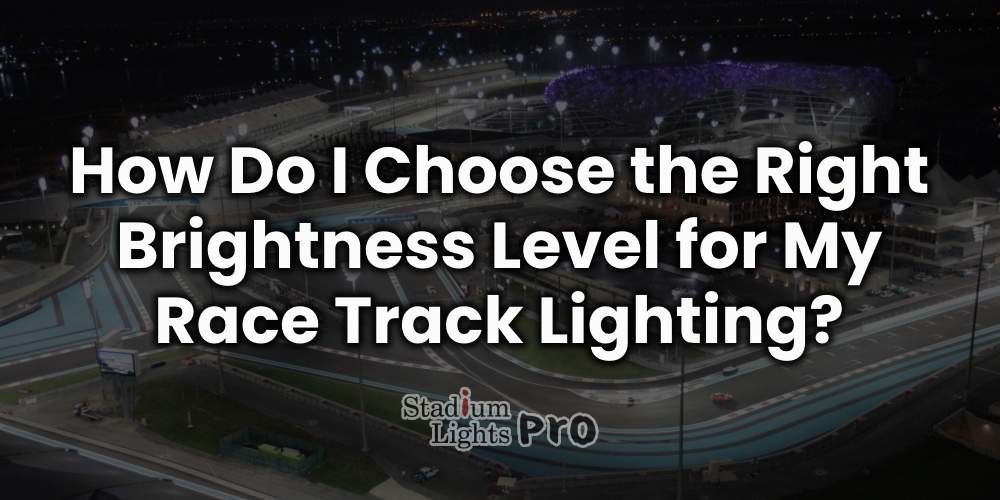When considering the appropriate brightness level for race track lighting, a myriad of factors come into play. Firstly, the layout and size of the track itself dictate the distribution and intensity of light needed across different sections, including straightaways, turns, and pit areas. Additionally, environmental conditions such as time of day and weather must be taken into account, as these variables can significantly affect visibility. Furthermore, the types of events hosted on the track, whether it be daytime races, nighttime events, or even televised competitions, all influence the optimal brightness level required.
The selection of the right brightness level is a multifaceted decision that requires a comprehensive understanding of the unique characteristics and demands of the race track environment. By carefully considering these factors, track owners and lighting designers can ensure that the lighting system not only meets regulatory standards but also enhances safety, performance, and overall spectator experience.
Table of Contents
ToggleUnderstanding Race Track Lighting Requirements

Safety Considerations for Drivers and Spectators
Safety is paramount in any race track environment, and proper lighting is essential to mitigate risks and ensure the well-being of both drivers and spectators. Adequate illumination helps drivers accurately perceive the track layout, judge distances, and react to potential hazards in real-time. Additionally, well-lit spectator areas contribute to a secure viewing experience, reducing the likelihood of accidents or injuries due to poor visibility. Moreover, effective lighting design can minimize glare and shadows, which can otherwise impede visibility and hinder performance on the track.
Illumination Needs for Different Sections of the Track
Different sections of a race track present unique lighting challenges and requirements. For instance, straightaways typically necessitate consistent and evenly distributed lighting to maintain optimal visibility at high speeds. On the other hand, turns may require additional lighting emphasis to illuminate corners and apexes, where precise maneuvering is crucial. Pit areas and entry/exit points also require adequate lighting to facilitate safe transitions on and off the track. Understanding these specific illumination needs ensures that the lighting design effectively supports the demands of each track section, optimizing safety and performance for all users.
Regulatory Standards and Guidelines
Race track lighting must comply with various regulatory standards and guidelines to ensure adherence to safety protocols and legal requirements. Regulatory bodies often establish minimum illumination levels, uniformity ratios, and glare limitations to safeguard participants and spectators. These standards may vary depending on factors such as track classification, event type, and local regulations. Therefore, it is imperative for track owners and lighting designers to familiarize themselves with relevant standards and ensure that the lighting system meets or exceeds these specifications. Compliance with regulatory standards not only enhances safety but also mitigates liability risks and ensures the legality of race track operations.
Factors Influencing Brightness Level Selection
Track Size and Layout
The size and layout of a race track significantly influence the selection of the appropriate brightness level for its lighting system. Larger tracks may require higher intensity lighting to ensure adequate visibility across expansive stretches, while smaller tracks may suffice with lower light levels. Additionally, the layout of the track, including the presence of elevation changes, tight corners, and long straightaways, impacts the distribution and directionality of light needed in each section. Understanding these characteristics allows lighting designers to tailor the illumination scheme to effectively illuminate all areas of the track, optimizing safety and performance for drivers and spectators alike.
Time of Day and Weather Conditions
The time of day and prevailing weather conditions play a crucial role in determining the optimal brightness level for race track lighting. Daytime events may require less intense lighting compared to nighttime races or events held during twilight hours. Similarly, inclement weather such as rain or fog necessitates higher light levels to compensate for reduced visibility and ensure safe racing conditions. Flexible lighting systems equipped with dimming capabilities or adjustable settings can accommodate variations in natural lighting conditions, allowing for optimal visibility and performance regardless of the time of day or weather conditions.
Types of Events Hosted on the Track
The nature of events hosted on the track, whether it be professional racing competitions, amateur races, or recreational driving sessions, influences the brightness level requirements of the lighting system. Professional racing events may demand higher light levels to meet stringent performance standards and ensure precise maneuvering at high speeds. In contrast, recreational track days may prioritize energy efficiency and cost-effectiveness without compromising safety. Tailoring the brightness level to suit the specific needs and expectations of event organizers and participants ensures a customized lighting solution that enhances the overall experience for all stakeholders.
Spectator Viewing Areas
In addition to illuminating the track itself, race track lighting must also consider the visibility needs of spectators in viewing areas and grandstands. Properly lit spectator areas enhance the viewing experience by providing clear sightlines and minimizing glare, allowing spectators to follow the action on the track comfortably. Furthermore, adequate lighting in spectator areas contributes to a safe and inviting environment, reducing the risk of accidents or injuries due to poor visibility. By considering the lighting requirements of both the track and spectator areas, lighting designers can create a comprehensive illumination strategy that enhances safety and enjoyment for all attendees.
Methods for Determining Optimal Brightness Level
Photometric Analysis and Simulation Software
One method for determining the optimal brightness level for race track lighting is through photometric analysis and simulation software. This approach involves using specialized software to create virtual models of the race track and simulate various lighting scenarios. By inputting factors such as track size, layout, fixture placement, and lighting specifications, designers can generate accurate predictions of light distribution, intensity, and uniformity across the entire track. Photometric analysis enables precise adjustments to be made to the lighting design, ensuring that the desired brightness levels are achieved in each section of the track. This method allows for efficient and cost-effective optimization of the lighting system before installation, minimizing the need for costly revisions or modifications later on.
On-Site Testing and Adjustments
On-site testing and adjustments provide valuable insights into the actual performance of the lighting system in real-world conditions. This method involves installing temporary lighting fixtures or conducting pilot tests to evaluate the effectiveness of the proposed lighting design. By observing the lighting effects firsthand and gathering feedback from drivers, track officials, and spectators, designers can identify areas for improvement and make necessary adjustments to optimize brightness levels. On-site testing also allows for fine-tuning of lighting angles, fixture positions, and light output settings to achieve the desired illumination and minimize glare or shadows. This iterative approach ensures that the final lighting solution meets the specific requirements and preferences of the race track environment.
Consulting with Lighting Experts and Engineers
Consulting with lighting experts and engineers provides invaluable expertise and guidance throughout the process of determining the optimal brightness level for race track lighting. Experienced professionals can offer insights into best practices, industry standards, and innovative technologies that can enhance the performance and efficiency of the lighting system. By leveraging their knowledge and expertise, track owners and designers can make informed decisions regarding fixture selection, lighting layout, and control strategies to achieve optimal brightness levels while minimizing energy consumption and operating costs. Additionally, lighting experts can provide valuable recommendations for ongoing maintenance and monitoring to ensure long-term reliability and performance of the lighting system. Collaborating with knowledgeable professionals helps streamline the decision-making process and ensures that the final lighting solution meets the highest standards of safety, performance, and reliability.
Balancing Brightness with Energy Efficiency

Consideration of Energy Consumption and Costs
Balancing brightness with energy efficiency is paramount in race track lighting design, as high-energy consumption can lead to increased operational costs and environmental impact. Therefore, it is essential to carefully consider energy consumption and associated costs when selecting the optimal brightness level for the lighting system. By conducting thorough energy audits and lifecycle cost analyses, track owners and designers can identify opportunities to minimize energy usage while maintaining adequate illumination levels. This may involve selecting energy-efficient lighting fixtures, optimizing lighting layouts, and implementing smart lighting controls to reduce energy waste during off-peak hours or periods of low activity. By prioritizing energy efficiency, race track operators can significantly reduce operating expenses and minimize their carbon footprint without compromising safety or performance on the track.
Utilization of LED Technology and Lighting Controls
LED (Light Emitting Diode) technology has revolutionized race track lighting by offering superior energy efficiency, durability, and control capabilities compared to traditional lighting sources. LED fixtures consume significantly less energy while delivering higher lumen output, resulting in brighter illumination with reduced electricity consumption. Furthermore, LED luminaires are highly customizable and compatible with advanced lighting controls such as dimming, zoning, and scheduling, allowing for precise adjustment of brightness levels to match varying lighting needs throughout the day or during different types of events. By leveraging LED technology and lighting controls, race track operators can achieve optimal brightness levels while maximizing energy savings and operational flexibility. Additionally, the long lifespan and minimal maintenance requirements of LED fixtures contribute to further cost savings and sustainability over the lifetime of the lighting system.
Long-Term Maintenance and Operational Expenses
In addition to upfront installation costs and energy consumption, long-term maintenance and operational expenses must be factored into the overall cost-benefit analysis of race track lighting. While initial investment in energy-efficient lighting solutions may be higher, the potential for reduced maintenance and operational costs over time can yield significant savings and return on investment. LED fixtures, known for their durability and reliability, typically require less frequent replacement and maintenance compared to traditional lighting technologies, resulting in lower long-term operational expenses. Furthermore, proactive maintenance practices such as regular cleaning, inspections, and performance monitoring can help optimize the efficiency and longevity of the lighting system, minimizing downtime and unexpected repair costs. By considering the total cost of ownership over the lifetime of the lighting system, race track operators can make informed decisions that balance brightness with energy efficiency while maximizing overall cost-effectiveness and sustainability.
Case Studies and Examples
Showcase of Race Tracks with Effective Lighting Solutions
Several race tracks around the world serve as excellent examples of effective lighting solutions that balance brightness with energy efficiency and performance. For instance, the Circuit of the Americas in Austin, Texas, features a state-of-the-art LED lighting system that illuminates the track with exceptional clarity and uniformity, providing optimal visibility for both drivers and spectators during night races and events. The lighting design at Circuit of the Americas showcases the benefits of LED technology and sophisticated lighting controls in achieving superior brightness levels while minimizing energy consumption and operational costs.
Similarly, the Yas Marina Circuit in Abu Dhabi boasts one of the most advanced race track lighting systems in the world, with dynamic LED fixtures that can be programmed to create stunning visual effects and enhance the spectator experience during evening races and special events. The innovative lighting design at Yas Marina Circuit demonstrates the creative possibilities of LED technology in creating immersive and engaging lighting environments that enhance the overall ambiance and excitement of motorsport events.
In addition to these international examples, several regional and local race tracks have implemented cost-effective lighting solutions that deliver impressive performance and energy efficiency. By leveraging LED technology, smart lighting controls, and strategic lighting design principles, these race tracks have successfully achieved optimal brightness levels while minimizing energy consumption, operational costs, and environmental impact. These case studies serve as inspiration and best practices for race track operators and designers seeking to enhance their lighting systems for improved safety, performance, and sustainability.
Lessons Learned
One of the key lessons learned is the importance of thorough planning and collaboration between stakeholders, including track owners, lighting designers, engineers, and lighting manufacturers. Effective communication and coordination throughout the design, installation, and commissioning phases are essential to ensuring that the lighting system meets the specific requirements and expectations of the track environment.
Furthermore, flexibility and scalability are critical considerations in race track lighting design, as the lighting needs of a track may evolve over time due to changes in event schedules, regulations, or technological advancements. By designing lighting systems with modular components, adaptable controls, and future-proofing features, race track operators can easily accommodate evolving requirements and integrate new technologies without the need for extensive retrofitting or system upgrades.
Another important point is the value of ongoing maintenance, monitoring, and performance optimization to maximize the longevity and effectiveness of the lighting system. Regular inspections, cleaning, and maintenance procedures help identify and address potential issues before they escalate, ensuring uninterrupted operation and minimizing downtime during critical events. Additionally, leveraging data analytics and performance metrics can provide valuable insights into energy usage, system efficiency, and maintenance needs, enabling proactive decision-making and continuous improvement of the lighting system over time.
Conclusion
Selecting the right brightness level for race track lighting demands a holistic approach that considers a multitude of factors. By recapping key considerations such as track size and layout, time of day and weather conditions, types of events hosted, and spectator viewing areas, decision-makers can ensure that the lighting system meets the specific needs of the track environment. This comprehensive evaluation lays the foundation for achieving optimal visibility, safety, and performance for drivers and spectators alike.

